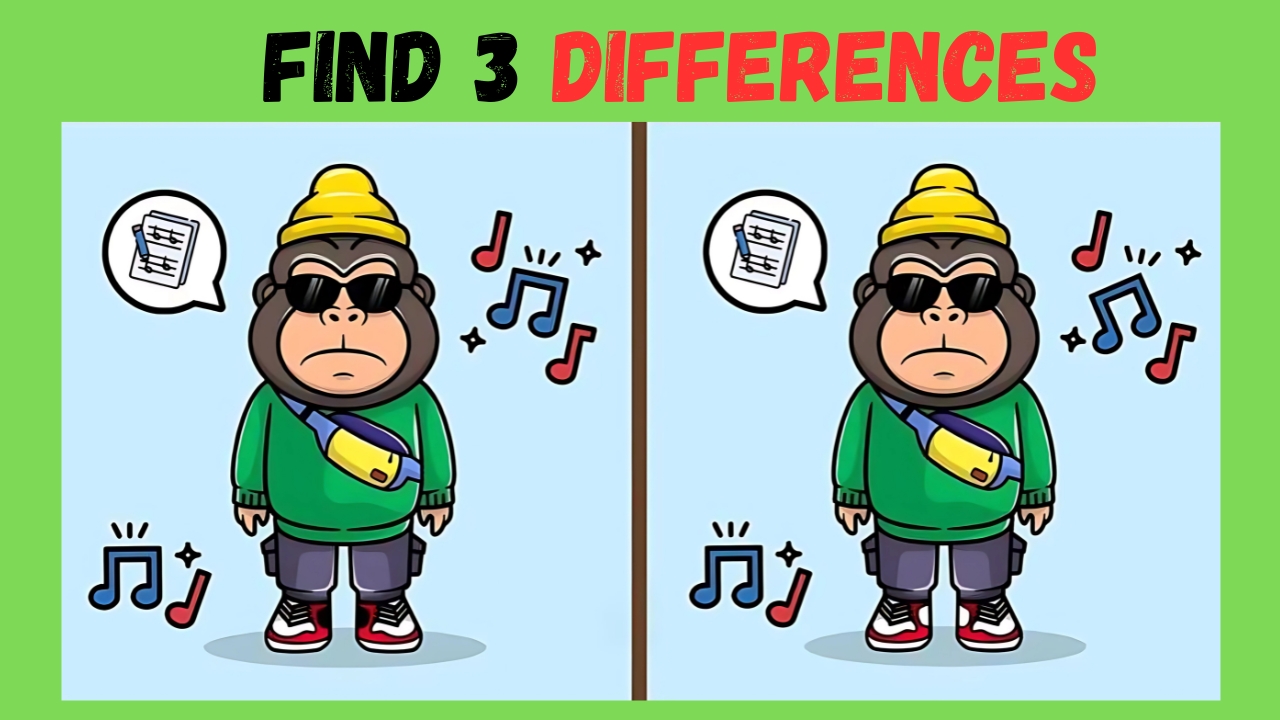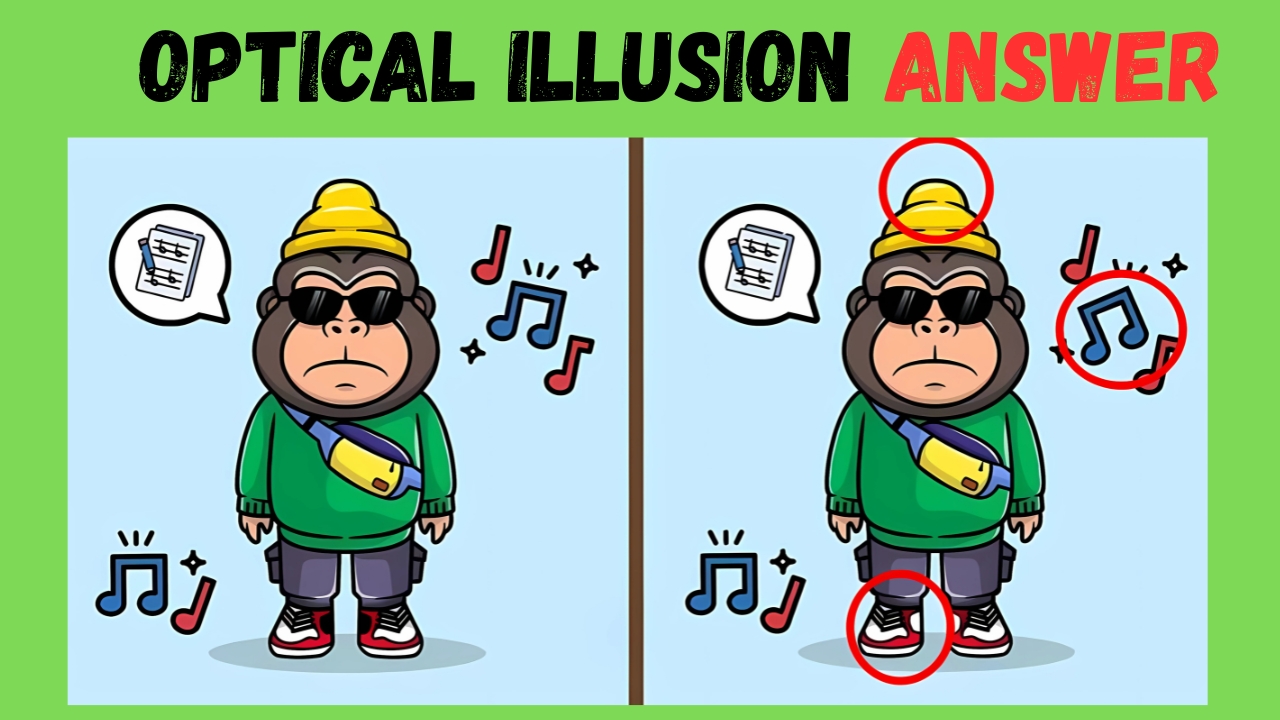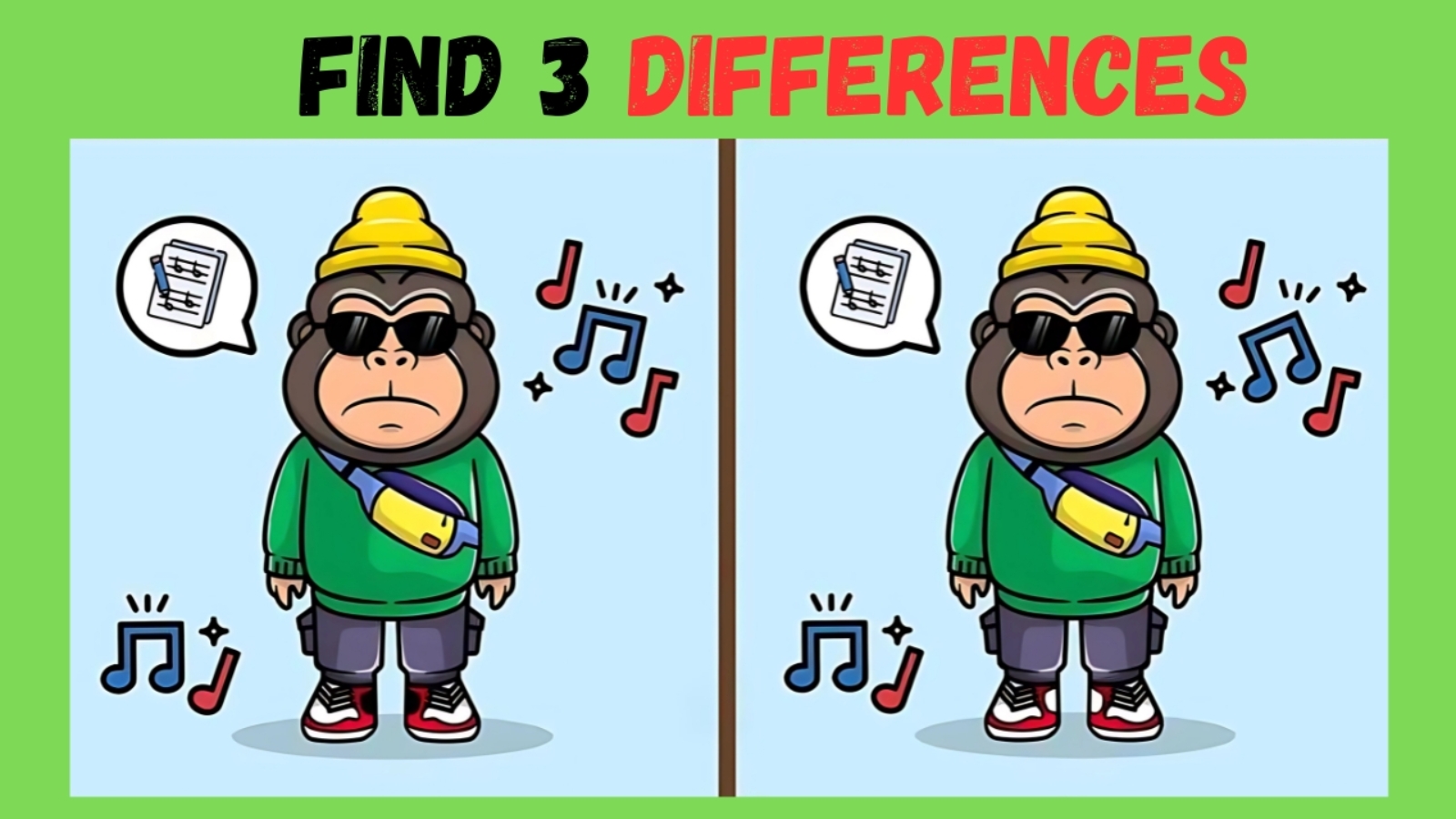Have you ever stared at two nearly identical gorilla images, knowing something’s different but unable to figure out what? You’re not alone. These visual puzzles have captured millions of people worldwide, and there’s actually fascinating science behind why they’re so addictive.
Why Gorillas Create the Perfect Visual Challenge
Gorillas make exceptional puzzle subjects for several compelling reasons. Their rich, textured fur provides countless hiding spots for subtle changes. Those expressive faces and complex body language offer puzzle creators multiple opportunities to insert clever modifications that blend naturally into the scene.
Think about it – when you look at a gorilla, your eye immediately goes to those intelligent eyes or that powerful stance. Meanwhile, a missing branch, altered shadow, or slightly different hand position can easily escape your notice. That’s exactly what makes these challenges so brilliantly frustrating and satisfying to solve.
The natural habitat settings add another layer of complexity. Dense jungle foliage, intricate bark patterns, and scattered leaves create the perfect camouflage for hidden differences. It’s like nature designed the ultimate spot-the-difference backdrop.
Optical Illusion Find All 3 Mistakes in the Gorilla Image

How Your Brain Processes These Visual Puzzles
Your mind works incredibly fast when processing images, but this speed can actually work against you in difference puzzles. Within milliseconds, your brain categorizes what it sees and fills in expected patterns. This mental efficiency helps you navigate daily life, but it also makes you miss subtle changes.
When you examine two gorilla images, your brain quickly identifies “gorilla in jungle setting” and moves on. Those tiny alterations – a modified leaf, changed eye direction, or adjusted posture – get filtered out as unimportant details. Understanding this process is your first step toward becoming a puzzle master.
The Pattern Recognition Trap
Pattern recognition is both your greatest asset and biggest obstacle. Your brain loves familiar shapes and predictable arrangements. When something fits an expected pattern, you tend to overlook variations. Smart puzzle designers exploit this tendency by placing differences in areas where your brain expects consistency.
Proven Techniques for Spotting Hidden Differences
Start with the Big Picture Step back from your screen or hold the images at arm’s length. Sometimes differences become obvious when you’re not scrutinizing every detail. Your peripheral vision often catches discrepancies that focused attention misses.
Use the Grid Method Mentally divide each image into sections – perhaps four quadrants or six rectangular areas. Compare each section systematically between both images. This methodical approach ensures comprehensive coverage without random scanning.
Focus on High-Activity Areas Areas with lots of visual complexity are favorite hiding spots for differences. Dense fur patterns, busy backgrounds, and overlapping elements provide natural camouflage for modifications. These zones deserve extra attention during your search.
Check the Edges Many people instinctively focus on central subjects, but puzzle creators often hide differences along image borders where they’re less likely to be discovered immediately.
Advanced Spotting Strategies
The Blinking Technique Rapidly shift your gaze between corresponding areas in both images. This back-and-forth motion helps your brain detect inconsistencies more effectively than steady staring.
Color Isolation Focus on one color at a time. Look at all the brown areas in both images, then all the green sections, and so on. This targeted approach can reveal differences that blend into multi-colored scenes.
| Technique | Best Used For |
|---|---|
| Grid Method | Comprehensive systematic searching |
| Big Picture View | Initial difference spotting |
| Edge Checking | Finding overlooked peripheral changes |
| Color Isolation | Complex multi-colored scenes |
| Blinking Method | Detecting subtle movement/position changes |
| High-Activity Focus | Dense pattern areas |
Mental Benefits You’ll Actually Notice
Regular puzzle practice sharpens your observation skills in surprising ways. People who engage with these challenges frequently report noticing details in daily life that previously escaped their attention – from small changes in familiar environments to inconsistencies in documents.
Your working memory gets stronger too. Constantly comparing images while holding information in your mind builds cognitive stamina. This improved mental flexibility transfers to many real-world situations requiring quick decision-making and attention management.
Stress Relief Through Focus
These puzzles create a natural meditative state. The concentrated attention required quiets mental chatter and provides genuine stress relief. It’s like mindfulness practice disguised as entertainment.
Why Time Limits Make Everything Better
Time constraints aren’t just about difficulty – they prevent overthinking, which often sabotages visual puzzle solving. When you have unlimited time, you might second-guess obvious answers or get stuck analyzing irrelevant details.
The pressure also adds genuine excitement. There’s real satisfaction in beating the clock while successfully identifying all differences. Plus, time limits better reflect real-world situations where quick observation matters.
Optimal Practice Timing
Try gorilla puzzles at different times to discover when your visual processing peaks. Many people perform better during certain hours when energy and focus levels naturally align. Morning sessions often yield better results than late-evening attempts.
Making the Most of Every Challenge
Approach each puzzle as a learning opportunity rather than a test. Missed differences aren’t failures – they’re insights into how your visual processing works and areas where you can improve.
Vary your strategies occasionally. Sometimes systematic scanning works best, while other times letting your eyes roam freely produces better results. Different puzzle layouts may respond better to different approaches.
Remember that these challenges exist for enjoyment and mental exercise. The goal isn’t perfection every time, but engaging your mind in beneficial activity that happens to be genuinely fun.
Whether you need a quick mental break or want serious brain training, gorilla spot-the-difference puzzles offer an engaging way to sharpen observation skills while having real fun. Next time you encounter one of these visual challenges, appreciate both the puzzle and your remarkable brain working to solve it.
Optical Illusion Answer

Frequently Asked Questions
Q: How long should I spend on a gorilla difference puzzle?
A: Most people find 30 seconds to 2 minutes optimal. Longer sessions often lead to overthinking and decreased performance.
Q: Are these puzzles actually good for brain health?
A: Yes! Regular practice improves attention to detail, pattern recognition, and working memory in measurable ways.
Q: What if I can’t find all the differences?
A: That’s completely normal. Focus on the ones you did find and treat missed differences as learning opportunities for next time.
